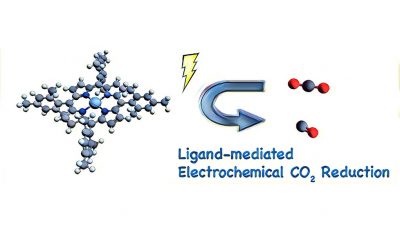Using a zinc-porphyrin electrocatalyst, chemists from Yale University and Oregon State University have discovered the framework for a new method of electrochemical carbon dioxide reduction.
Chemists at Yale and Oregon State University have discovered a new process for converting carbon dioxide into carbon monoxide, potentially establishing a framework for creating fuels and chemical products from carbon emissions.
Electrochemical carbon dioxide reduction — the idea of using electricity to change CO2 to value-added products — is widely considered to be a promising approach for improving energy technology. Not only would it remove carbon dioxide from the atmosphere, it also would generate useful products such as carbon monoxide, an important chemical feedstock and fuel used in industry.
Yale chemistry assistant professor Hailiang Wang, Yale chemistry chair and professor Gary Brudvig, and Oregon State University assistant professor Zhenxing Feng collaborated on the new finding. Brudvig and Wang are faculty members of the Energy Sciences Institute at Yale West Campus.
The researchers discovered a zinc-porphyrin complex that acts as a catalyst in an unexpected way: the zinc ion binds the reactant but does not change its oxidation state, while the porphyrin ion (or ligand) is reduced and delivers electrons to complete the reaction.
“The zinc-porphyrin electrocatalyst reported in this work can catalyze carbon dioxide reduction to carbon monoxide with a current efficiency higher than 90%,” Wang said.
Publication: Yueshen Wu, et al., “Electroreduction of CO2 Catalyzed by a Heterogenized Zn–Porphyrin Complex with a Redox-Innocent Metal Center,” ACS Cent. Sci., 2017; DOI: 10.1021/acscentsci.7b0016






